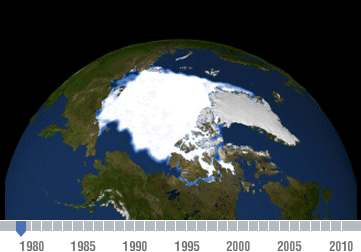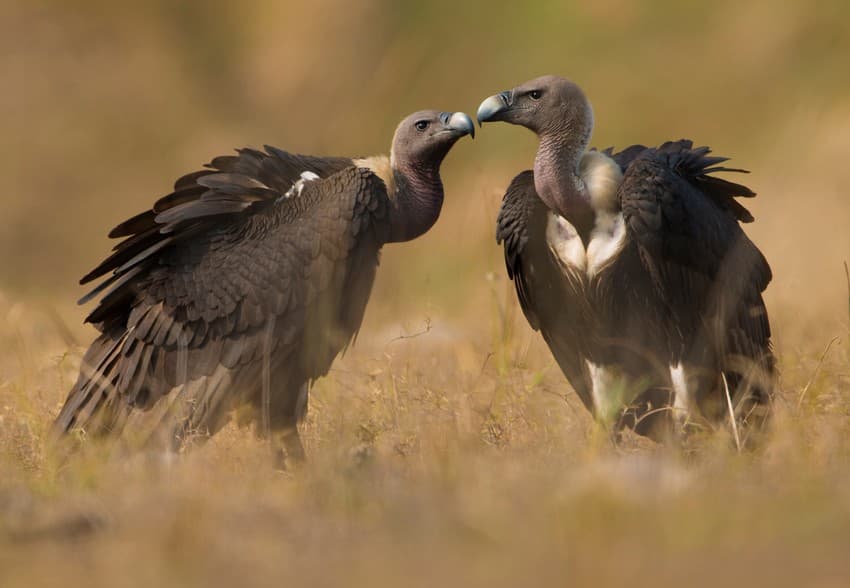A large part of the Earth’s allure lies in the strange, invisible and seemingly bizarre connections that underlie everything from ecosystems to planetary motions! How deep these connections among nature’s creations run is anyone’s guess. We are only left to marvel at just how much deeper it goes with every dot that we connect. Can fungi make rain? Can fossil dust blowing from the Sahara desert in Africa fertilise the Amazon basin in South America? Is climate change causing the Earth’s axis to tilt? Did the near-extinction of vultures invite more feral dogs and diseases in India? Come. Let’s explore some of these weird connections!
Fungi That Make Rain!
The intricate linkages within the Earth’s living system become apparent in most incredible and unpredictable ways. One such example is that of fungi which make rain! Yes, you read that right. The spores released into the air by mushrooms on the forest floor drift far and high. Several of these light, single-celled spores float about as aerosol in the humid air of tropical forests. Gelatinous fluid that these spores come covered in, further attracts water, and each spore acts as a nucleus for the formation of raindrops. You may wonder how a diminutive, microscopic fungal spore could cause rainfall over entire tropical forests. To put things into perspective, think of millions of tonnes of fungal spores dispersing into the atmosphere each year. A single mushroom is capable of spouting at least 30,000 basidiospores per second.

Fungal spores released in the air in their millions seed water droplets producing rainfall in tropical forests. Photo: Public Domain
To form clouds, the water requires something to cling on to, and fungal spores in their millions, are ideal substrates. Each spore attracts more and more water resulting in drops of rain in the clouds, which falls back to the earth, nourishing the forest floor where more generations of fungi thrive, and more spores take birth. This unique feedback loop makes the world go round, in these tropical forest ecosystems!
Fossil Dust From The Sahara Fertilises The Amazon!
This is a story of an ancient, giant lake Mega Chad in southern Sahara, at a time when the Sahara was not so arid and dry, many thousands of years ago. This massive lake was the largest freshwater lake in Africa at the time and stretched over 350,000 sq. km. That’s the size of Germany! It overflowed with water and fish and several other organisms ranging from massive crocodiles to microscopic single-celled algae called diatoms. Today, the buried remains of these aquatic denizens are found scattered in what is the windiest and the dustiest place on Earth – the Bodélé Depression, in the southern edge of the Sahara Desert, in north Africa. What used to be a lake bed long ago, is today throwing up fossils of ancient fish thousands of years old. And in the words of science communicator Latif Nasser, uttered on his Netflix science show ‘Connected’, these fish and other organisms are “leading an astonishingly weird afterlife!”.
The heavy winds that blow through this Bodélé depression, breakdown the exposed fossils into dust so fine, they measure almost one tenth of the width of a human hair. But, tonnes and tonnes of these particles are lifted off the Saharan floor, and they make a global journey of about 3,000 sq. km. across the Atlantic Ocean in the form of massive plumes that can be seen from space. As per NASA’s CALIPSO satellite, on an average 182 million tonnes of dust emigrates from Africa each year of which nearly 27 million tonnes makes landfall on the Amazon basin, fertilising the soil there. The significance of this dust is that it carries amidst it a special type of phosphorus mineral whose source has been fantastically traced to the Bodele fish bone and scales! The Amazon rainforest in South America thrives on this fossilised fish dust that blows in all the way from the Sahara Desert! Wonder what will become of the Amazon when this unique stock of Saharan fossils is all blown to dust!
Climate Change Is Causing The Earth’s Axis To Tilt!

Decline of the Arctic sea ice is an unmistakable indicator of climate change. GIF animation credit: NASA/Goddard Scientific Visualization Studio and adapted for NASA’s Global Climate Change website http://climate.nasa.gov/
Can a butterfly flapping its wings in Brazil lead to a tornado in Texas? The famous ‘butterfly effect’ suggests that the smallest of events are poised to have cascading impacts that can influence the future course of much larger and complex systems. This well explains the recent studies that show how man-made climate change and other human activities have literally caused the Earth’s axis to shift! Our planet spins about an imaginary axis much like a top. The North and South poles – the points at which the spin axis line intersects the Earth – aren’t fixed and are constantly moving due to the shifting weight of the Earth’s mass and thereby the rotational axis, known as ‘polar motion’. One of the ways in which Earth’s weight shifts around is by change in the distribution of the terrestrial water mass in the oceans, ice sheets, as well as stored groundwater.
Global warming, in the past couple of decades, has led to massive and rapid melting of polar ice and loss of groundwater to extractive industrial and agricultural activities. This has caused a stark redistribution of the Earth’s mass, impacting its rotation about the axis, causing the North Pole to drift more eastwards, since the 1990s, according to a recent study. This polar drift has been several times faster than the average rate recorded in the previous decades. Humans are apparently effecting change at a celestial scale now!
Near-Extinction Of Vultures Invited Feral Dogs And Diseases!

White-rumped Vultures nearly went extinct in India in the 1990s due to the consumption of the toxic Diclofenac drug traces in the cattle carcasses they scavenged on. Image: Nayan Khanolkar
No other bird population decline episode on record, in its rate and nature, has been as dramatic as that of the vultures. Vultures, once abundant in India and South Asia, are now on the verge of extinction. The Indian populations especially of the Indian Long-billed Vulture (Gyps indicus), Slender-billed Vulture (Gyps tenuirostris) and the White-rumped Vulture (Gyps bengalensis) crashed by more than 90 per cent. The White-rumped Vulture perhaps was the worst hit, with 99.9 percent of its kind having been decimated in a short span of time between 1992 and 2007. The most abundant of raptors which once filled the skies, were literally dropping dead from their perches, and soon became critically endangered. From a strength of 40 million up until early 1990s, these vultures almost went extinct in India in a matter of a decade. The silent killer, it was found after much investigation by experts from various nations, was the non-steroidal anti-inflammatory drug called Diclofenac which was being widely used as painkiller in India and other neighbouring countries to treat cattle. Vultures, being obligate scavengers would feed on the cattle carcasses, ingesting the Diclofenac in the process, leading to fatal renal failure and gout.
Interestingly, the important role of the scavengers in an ecosystem, as well as in the human society, became clear when with no vultures left to feed on the thousands of dead cattle, they now lay strewn across rural landscapes. The carcasses left to rot by themselves became a hotbed of diseases, including anthrax. One major problem that arose, was the proliferation of feral dog population, which coinciding with the vulture crisis, saw an increase of an estimated 5.5 million in India. The ripple effect continued with additional 38.5 million dog bite cases being recorded and 47,300 more deaths registered due to rabies in the period witnessing mass vulture die-offs in the country. Experts believe that it may have cost the Indian economy about $34 billion to deal with the rabies crisis alone!
——————————————————————————————————————————————————————
About the author: Purva Variyar is a conservationist, science communicator and conservation writer. She works with the Wildlife Conservation Trust and has previously worked with Sanctuary Nature Foundation and The Gerry Martin Project.
Disclaimer: The author is associated with Wildlife Conservation Trust. The views and opinions expressed in the article are her own and do not necessarily reflect the views and opinions of Wildlife Conservation Trust.
——————————————————————————————————————————————————————
Your donations support our on-ground operations, helping us meet our conservation goals.
——————————————————————————————————————————————————————
Related Links
- Fish Out of Water – One Too Many
- Protecting Our Protectors – Health Challenges Faced By India’s Frontline Forest Staff
- 2016 wins the race for – “The Hottest Year on Record”
- 25 Reasons Why the WTO Must End Subsidies That Drive Overfishing
- Earth Day 2021

